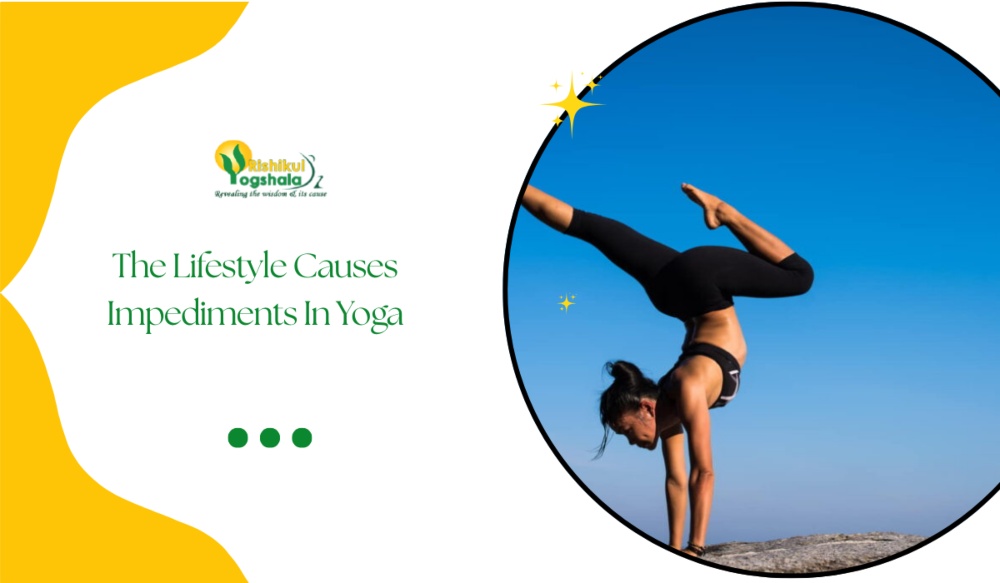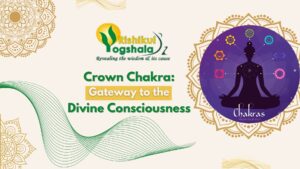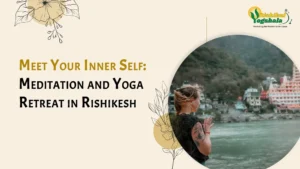Cause of Impediments In Yoga
There are many causes of impediments to yoga. The subject yoga is pragmatic and has charisma; it can be a helpful tool to provide clarity in vision for all those who are seeking to walk with gathering enthusiasm; no matter in which profession you are (A Farmer, Teacher, Engineer, Salesman, Hotelier, Doctor, artist, Yogi, and so on).
The pursuit of Mantras and Shlokas in Indian Darshanas (texts), and Upanishads has been our guiding light in terms of meditation at all times, which we have received from our ancestors and teachers, and still have value in the modern era.
It can give us so many practical lessons that cannot be taught and learned in modern universities and schools, but our parents, grandparents, and spiritual masters can share with us how to live peacefully and mindfully.
The Shlokas of Hatha Yoga teach us and bring our attention to “Badhaka tattvas” before entering into “Hatha Yoga Sadhna”, so that we can be eager to live life holistically and simultaneously prepare ourselves for Salvation (through daily Sadhna and introspection).

Hatha Yoga in our life, Pradipika chapter 1.15th throws light on Badhaka tattvas (Badhaka means impediment/causes failure, and tattvas refer to living with principles/ habits/elements).
In a nutshell, the principles/habits cause impediments in Yoga Sadhna.
The impediments that are avoided by Hatha Yogis, Raja Yogis and Spiritual Traditions are:-
(1) Atyahara
- Atiyahara is overeating or eating more than required. In terms of practising daily Hatha Yoga (yoga in our life) sadhana, the units of energy are required; overeating demands a lot of energy consumption (digestive fire) to digest the food in the stomach and intestine, it terminates the practitioner’s energy into ‘Tamsik state’ (laziness/drowsiness). This is the most common impediment in Yoga.
- If there is no control in the habit of overeating, further, this can cause digestive problems, i.e., acidity, constipation, indigestion, heaviness in the chest, burning, etc.
- My reckoning is if Yoga practitioners will only waste his/her energy here or in solving problems by doing the Shatkriyas (six cleansing practices) and the Asanas (referring to remedial postures), then what is left for us to do the further Sadhna?

- There is a special quote in the Bhagwat Gita, Bhagavan Krishna explaining to Arjuna the personality of a Yogi. He says, “Yoga is neither for those who overeat nor for those who do not eat at all; it’s neither for those who sleep all the time nor for those who remain awake most of their time”.
- Briefly, in a nutshell, “a Yogi must eat to live, not live to eat”. The sense organ tongue and the brain should not overwhelm the primary aspect of “self-discipline”, and “should not act like a greedy dog, just by seeing the pieces of cookies and bread”. The great Hatha Yogi Swatma Rama says, “The food should be Sattvic and consumed ¾ of our stomach, in which ¼ part of the stomach is left empty for the gases and digestion purpose”. A Yogi who follows up such an appropriate diet during his/her life course is known as Mitahara Yogi (Mita means moderate and Ahara is the consumption of Food).
(2) Prayasa
Prayasa refers to Exertion, over-attempting.
- The fact is that a Yoga seeker should avoid exertion through physical-mental exercises. One thing you should know is that we are not discussing here a “Yoga teacher training program”, as the programs are held for a short duration, with various types of people, and different backgrounds. I am empathically discussing personal self-practice for daily sadhana.
- The over-attempting of physical and mental exercises results in strengthening the state of Rajo-guna (capriciousness) or Tamo-guna (lethargy/exertion); therefore, along with this, over-attempting can also cause lifetime imbalances to the organic body, i.e., joint pain, muscle pain, injury, mental turmoil, and psychological issues.

- I guess Hatha Yoga means not just to practice any style of Asana and Pranayama for one or two hours; it’s fabulous, but discussing and planning practice with competent teachers is also recommended.
Hatha Yoga leads to stimulating the Pancha-prana (five chambers of vital forces), exhilarating the Nadis (energy channels), bringing balance between Ida and Pingla (Body and mind), expanding the lifespan, developing clarity in thinking, will power, and the final journey towards self-realisation/salvation.
Therefore, a neophyte, regular practitioner, and teachers should avoid exertion and must be devoted to an experienced Guru to have continuous guidance and blessings.
(3) Prajalpa
Prajalpa means talkativeness/useless talk.
- The former president of India, Dr. APJ Abdul Kalam, has said that “silence is better than meaningless words.” A person who has a tendency/habit of talkativeness wastes not only his/her energy and time physically and mentally, but also others as well.
- The habit of being talkative also increases the contact directory with people; therefore, a person is involved physically and mentally to judge others, causing acid/poison in the mind.
The Yoga practitioner, who is involved in the arena of personal Sadhna, should avoid Prajalpa, which makes the seeker’s mind extroverted, distracted from Sadhna, and therefore caught in lust, anger, attachment, greed, jealousy, fragile ego, and so on.
Also Read: The Most Important favorable principles to a Yogi
(4) Niyamagrah
Niyamagrah means do not follow any of your own rules and regulations blindly. This is also an impediment in the yoga path.
- I have heard the story of a yogi who is from Rishikesh. He was doing a Tapa Sadhna (Austerity) followed by a daily ‘holy Ganga bath’ every morning and evening. He was devoted to his practice without missing a single day. He used to sit with his half body under the cold water and half body above, for an hour to chant mantras.
- He practised for years and faced all seasons. But later on, he analysed that his daily workout of Sadhna had negative effects on his limbs, so he stopped regular baths and instead, he used to take occasional baths in the Holy Ganga.
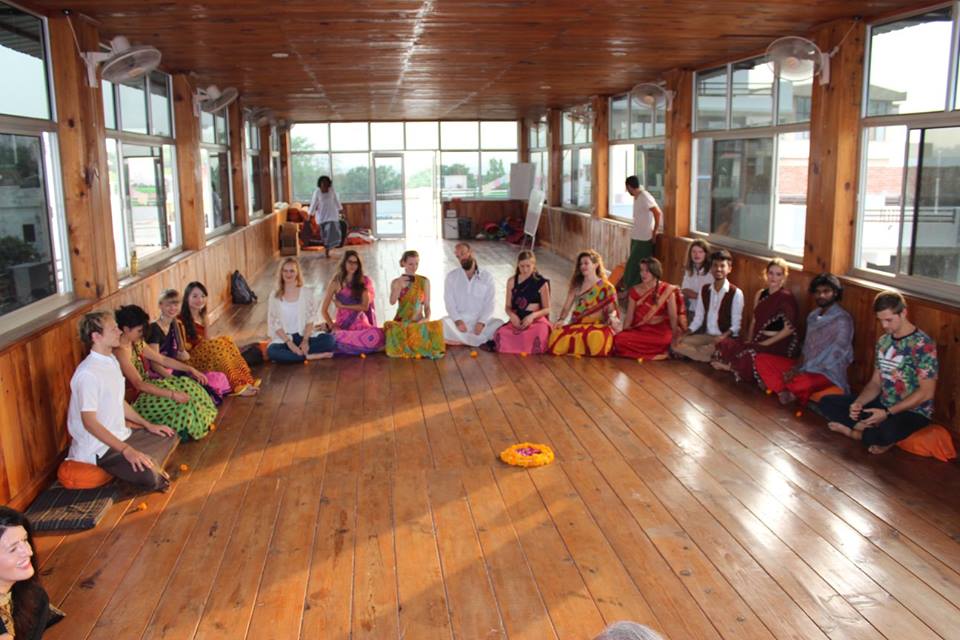
One day in his discourse, he questioned his Sadhakas (students and followers), what if the sadhna, rules, and regulations become an obstacle? He said, Do not stick with any rules or sadhna which is harmful and creates conflict in progress.
The rules are meant to create a peaceful atmosphere, harmony with others, and progress. If the same rules become a barrier in one’s Sadhna, we should immediately stop and ask the guru for further guidance. It can be said that Niyamas are an encouragement for the individual as well as for society if it is scientific and practical, and sometimes they also lead to impediments, if practiced blindly and in non-scientific ways.
(5) Jansangha
It means being with public contacts/ having connections with worldly-minded people.
- There are two kinds of people in our lives: those who will motivate us to achieve the goal (the goal could be mundane or spiritual, both require intense practice and guidance), and such people are very few in our lives. The second one who will catch your pulse and will be pushing you away from success, no matter how close they might be to you, i.e., friend/relative/unknown.
- It all happens because of the ignorance of ourselves/those with whom we spend unnecessary time. I guess that very few people have an understanding of how to discriminate and remain assertive. We humans are highly emotional beings and mind changers, and therefore are under pressure to fulfil our/others’ desires.
- Therefore, the Hatha Yoga tradition recommends minimising our contact list (meaning not to live alone, but keep yourself in a good circle of friends, relatives, and competent teachers), and focusing on Antaranga Sadhna (increasing the self-practice intensity and arranging a time to think about how we could be) in our free time. No matter how socially busy we are, how big our friend list is, how big our family is, arrange the time and have faith in yourself.
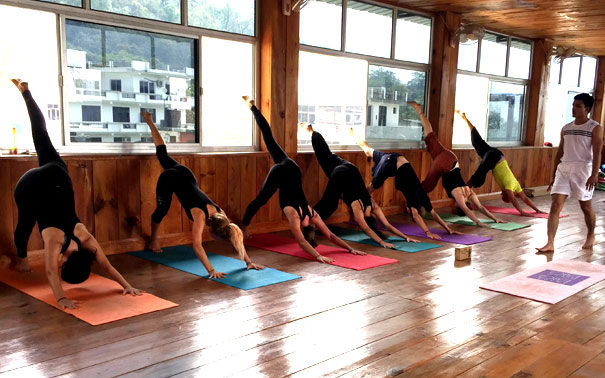
(6) Laulya
Laulya means a flickering mind/being greedy for the mundane life. This is a very impediment in the yoga path.
The most impediment in the yoga path is the sixth impediment, Laulya (a flicker-minded/monkey-minded). If our first five practices of “avoids” are going well during Sadhna, then the sixth one remains temporarily muted since the food for the mind is stopped and Sadhaka remains calm and focused, but still the mind can flicker and can take us many months or years behind in our practice/ it can cause stoppage and harm.
The Competent Yogis and Guru
The competent Yogis and Gurus knew these impediments in their students. That is why sometimes they are strict with us, giving extra tasks, they engage us in Karma Yoga to channel our high-frequency energy in the right direction, being soft and silent, and so on. All these acts by the Gurus help flicker-minded students to be held with their willpower (Sattva+Rajas = Wise thought with action) and witness the change within.
The competent Guru is rough and hard outside, but sensitive and merciful inside. Thus, there is no doubt that if a student of yoga is honestly engaged with the Guru’s instruction on Hatha Yoga, then the mind will have to become a slave of one’s willpower, the great benefits of health and success will be achieved, the practitioner will gain spiritual progress, and most importantly, the Santosha (contentment).
Also Read: Shitkari Pranayama In Yoga ( Importance, Benefits, Variations, And Precautions)
Dear yoga enthusiast, I hope you have enjoyed reading the article on Badhak Tattvas. The article is written in two parts. This one is half one, which explains “the Impediments in Sadhna”, and the second part will be posted in the coming days, which is known as in yoga philosophy “Sdhaka Tattvas,” the principal practice of Hatha Yoga, which will encourage the yogi to achieve the spiritual goals with satisfaction.
My best wishes to all of you, “stay healthy and motivated”. OM…
For reading my previous and upcoming articles, you can check my website: www.bipinbaloni.com or follow my Facebook page Bipinbaloni.
Conclusion
Understanding and addressing the impediments in yoga or obstacles in yoga is crucial for progress. By recognising these obstacles and developing strategies to overcome them, practitioners can enhance their practice, achieve greater balance, and experience the full benefits of yoga. Experience the transformative power of Yoga in Rishikesh, where the serene landscape and spiritual heritage create the perfect environment for deepening your practice.
For those interested in deepening their yoga journey, consider enrolling in a yoga teacher training program. Rishikul Yogshala Rishikesh, a leading Yoga school in Rishikesh, offers comprehensive courses like the 200 Hour Yoga Teacher Training in Rishikesh and the 300 Hour Yoga Teacher Training in Rishikesh. These programs are designed to help you master your practice and share the transformative power of yoga with others.
Last Modified Date: 01st October 2025

